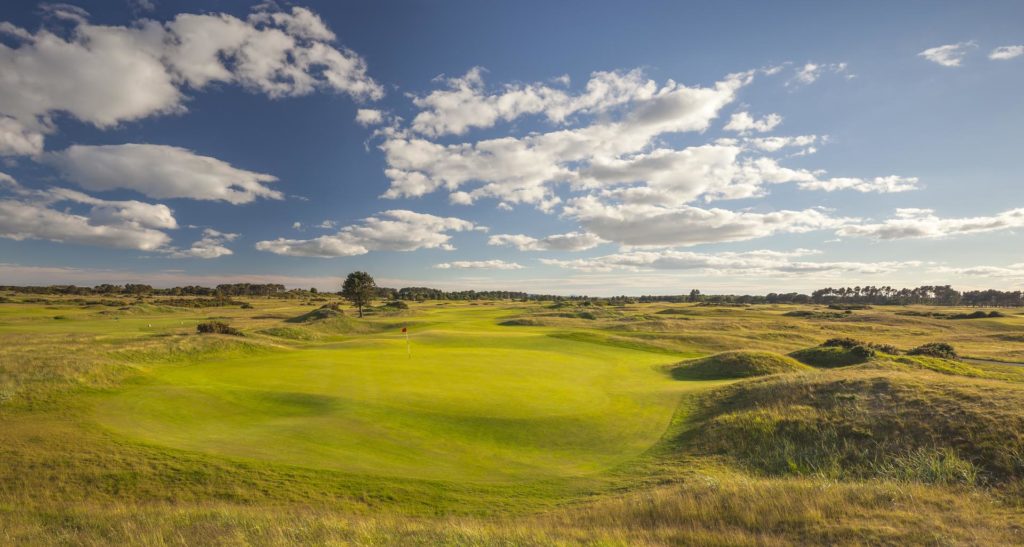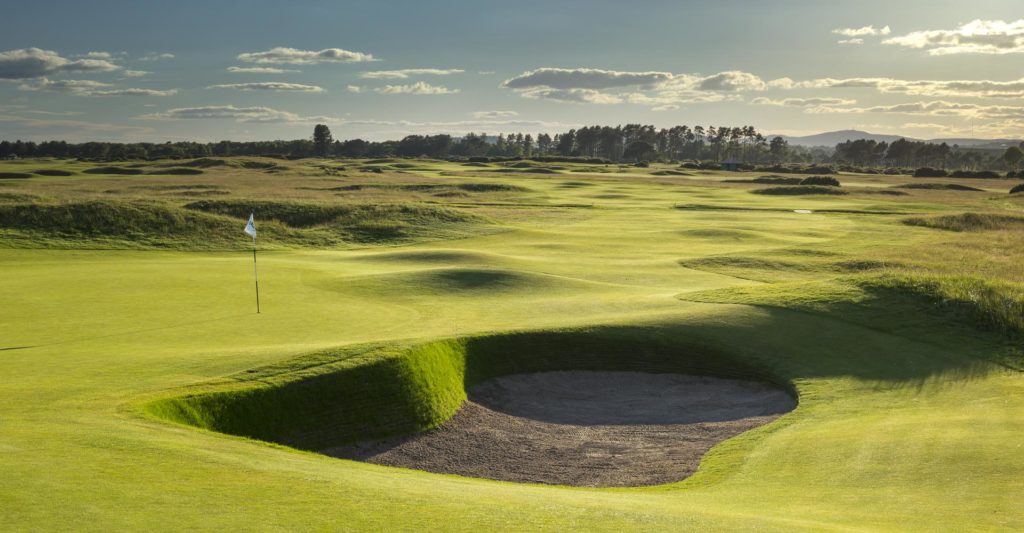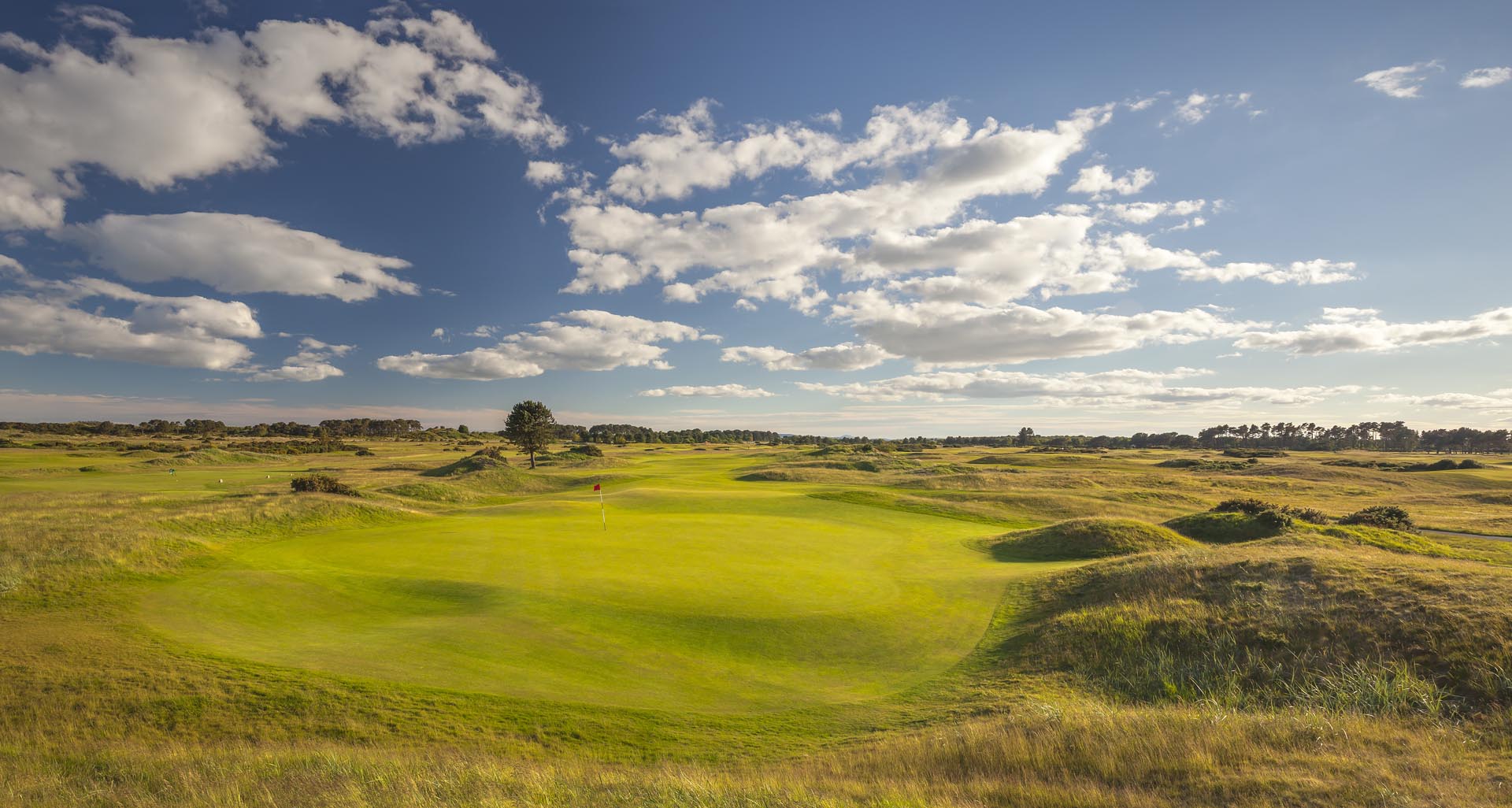Carnoustie looms
It was once dubbed “Car-nasty.” Should I be worried? (I am).
As Jason and I developed our plan for Scotland, evolving into six courses in six days, this was the course I think he really wanted to play — beyond the Old Course, which was not available to us — from his own sense of golf history.
He allowed me to schedule return visits to old favorites Machrihanish Golf Club, Machrihanish Dunes and North Berwick because I wanted to show them to him. Together we decided that Royal Dornoch and Cruden Bay could not be missed.
For our last slot, Jason wanted Carnoustie. And so on a Sunday morning in St. Andrews, our plan is to get up early and perhaps play a nearby nine-hole course, Anstruther, and walk the Old Course, because it is open for public strolls on Sunday, and then drive the hour to play, in the late afternoon, Carnoustie Golf Links, site of eight Open Championships
It is here that I admit that this fills this 19-handicapper with dread.
The course is known to be legendarily difficult. Here, in the 1999 Open Championship, Jean van de Velde came to No. 18 needing just a double-bogey six to get his name carved on the Claret Jug, made a seven after hitting into the notorious Barry Burn, and lost in a playoff to Paul Lawrie.
Actually, they carved his name on the jug anyway, before he finished No 18. And had to remove it.
Van de Velde’s travails were recalled last summer, when the Open was played again at Carnoustie, won by Francesco Molinari, and it is a compelling chapter in the Netflix documentary “Losers.”
(Watching with Cathie she asked “do you know this story?” Ah, dear, it is legend in golf.)
A few lessons from that documentary:
Yes, van de Velde might have won by hitting 9-irons down the fairway, or some such thing, but he’d been aggressive all week in getting the lead, so he simply remained in character. Second, I seemed to remember that he tried to hit a shot out of the water and failed; actually, he wanted to, and was in the stream to try, but the ball sank further and he was forced to declare an unplayable lie and take a drop.
Third, Jean van de Velde, in 2019, is a wonderfully classy, thoughtful person who has done much for golf in France. The adage is that sport doesn’t define character, but reveals it. Jean van de Velde has been revealed to have a ton of character.
And finally, the course seems to have played notoriously tough in 1999, the media dubbing it “Car-nasty” and bringing criticism for green superintendent John Philp.
“Look, they’ve got titanium and psychologists,” Philp said. “All I’ve got is nature.”
Now, to the course, ranked No. 21 in the world by Golf Digest, with greens fees of 150 pounds ($200) in April and 210 pounds ($280) in prime season. Tom Coyne played it in writing “A Course Called Scotland.”
“I expected to find black clouds swirling above a haunted clubhouse, with a soundtrack of grim organ music and a staff dressed in funeral colors,” Coyne wrote. “But there were no hearses queued up in the parking lot at Carnoustie; rather, it was a bright and cheery place with a modern clubhouse and a laughing starter eager for us to have a great day.”

Allan Robertson from St. Andrews laid out the original 10 holes somewhere between 1839 and 1842. Old Tom Morris extended it to 18 holes in 1867, but parish records confirm the existence of golf on the Barry Links as far back as 1560.
In 1931, Tommy Armour won the first Open Championship held at Carnoustie. Six years later, Henry Cotton won there. In 1953, Ben Hogan won, in his only Open Championship. Gary Player won in 1968, and in 1975 Tom Watson won the first of his five Open titles in an 18-hole playoff.
And then Carnoustie was off the list as an Open site. Local accommodations for spectators were deemed insufficient. The course needed work. “Once past the third hole, play was on a vast, flattish and monotonously pedestrian landscape,” James W. Finegan wrote. “Holes were often neither arresting nor inviting. There was too much of a dull slog.”
In that era, Finegan was clearly not a fan.
“The terrain is flat, bleak and uninviting,” he wrote once. “There are half a dozen mediocre to weak holes. … This historic links simply sits there, flat, severe, dour.”
In 1992, work to improve the course began, and the Open returned in 1999 and for the seventh time in 2007, won by Padraig Harrington, and again last year.
“The new Carnoustie was a revelation,” wrote Finegan, who had returned in 1998 for the first time in a decade. “This was Carnoustie reborn, and without any alteration to the routing plan. The holes would go where they had always gone, never more than two consecutive holes heading in the same direction so that the judgment of wind and distance would still be a consistently provocative business.
“In the sweeping makeover, no hole was left untouched. …. Bunkers were filled in on six holes; new bunkers were installed on 10 holes; several greenside bunkers were enlarged, and every one of these 118 pits — sod-faced, they range from penal to lethal — was fully reconditioned. The fairways are no longer straight strips. Their widths and perimeters were redefined so that now they swing a little, narrowing here, expanding there. Complementing all these improvements was new turf.”
He added:
“Carnoustie puts more pressure on the swing than any course in the British Isles. No hole is a breather. In truth, no shot is a breather. This is the most confrontational golf course we will ever play. Each time we take a club in hand, from our drive on the first (gorse and boundary left; sand, mounds and rough right) to our shot to the green on 18 (the broad Barry Burn just short of it, sand right and left of us) there is the threat of danger, tangible, looming.”

Among the memorable holes is No. 6, a par 5, chosen as one of the top 18 holes in all of golf. Bordering the hole on the left is a boundary fence. In the center of the driving area is a pair of bunkers, one behind the other. On the right is rough, and another bunker.
In 1953, Hogan challenged the left boundary and narrow landing area twice, successfully, winding up with two-putt birdies and leaving the label “Hogan’s Alley.” In 1968, Jack Nicklaus hit his drive out of bounds in the final round of the Open, costing him the tournament.
The No. 14 hole, a long par 4, is called Spectacles. The hole requires a forced carry over gorse to a blind fairway, where hole turns left, requiring a shot over the Spectacles bunkers in the sand hill to a hidden green.
And then in the end, golfers get to the Barry Burn; No. 17 is a par four called “Island” because the Barry Burn isolates sections of the fairway and must be cleared three times. On No. 18, the Barry Burn must be cleared twice, and it’s 20 feet wide in front of the green.
Wrote George Peper and Malcolm Campbell in “True Links:”
“It has always been regarded as the toughest challenge among Scotland’s great Open Championship links. This is a golf course without weakness, laid out in such a way that it never has more than two consecutive holes running in the same direction. The battle is with the elements as much as the course itself. When the wind blows, Carnoustie is not only unrelenting, unforgiving and always underrated, it can be virtually unplayable.”
Oh, boy.
Next: Our final stop, North Berwick Golf Club.
